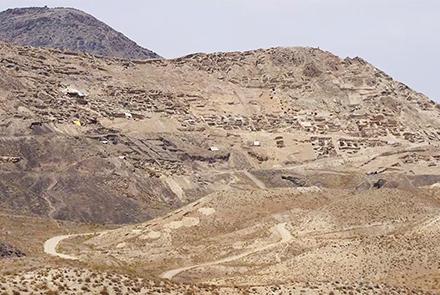An agreement was signed between the Ministries of Mines and Petroleum and Information and Culture on Saturday in Kabul to protect ancient relics at Mes Aynak copper mine.
According to the agreement, equipment will be taken to the mine in order for archeological excavations to be carried out. Relics recovered will then be transferred to a safe place and once this process is complete, extraction of copper at the mine will start.
Saturday’s agreement highlighted four points: transferring ancient relics, resettlement of residents living at archeological sites around the mine, maintaining security of the mine and amending the contract with China Metallurgical Group (MCC), a Chinese company, who won the contract to extract the copper.
“Different parts of the country have different historical sites which are very important. The Mes Aynak area in Logar province is a big site,” Hasina Safi, the acting minister of information and culture said.
“The Mes Aynak project is the seventh project that we have assessed in a year; we drew up the reports, got orders from the High Economic Council and have solved the problems,” said the Minister of Mines and Petroleum Nargis Nehan.
According to the Ministry of Information and Culture (MoIC), so far over 3,000 ancient relics have been recovered from 120 sites at the mine and in order to protect the relics no further unregulated digs will be allowed.
MoIC officials said the relics date back to the pre-Islam era.
“There are ancient relics that date back a long time,” said Noor Agha Noori, the head of the Archeology Institute of Afghanistan.
According to the ministry, an unknown number of ancient relics remain undiscovered at the mine but that they need to be unearthed before mining can start.
It is not yet known how long this archeological project will take.
Mes Aynak contains Afghanistan’s largest copper deposit and is 40 km southeast of Kabul in a barren region of Logar province.
In addition to the copper deposits, Mes Aynak also contains the remains of an ancient settlement with over 400 Buddha statues, stupas and a 40 ha monastery complex.
Archaeologists are only beginning to find remnants of an older 5,000-year-old Bronze Age site beneath the Buddhist level, including an ancient copper smelter.
The site of Mes Aynak possesses a vast complex of Buddhist monasteries, homes, and market areas. The site contains artifacts recovered from the Bronze Age, and some of the artifacts recovered have dated back over three thousand years. The site's orientation on the Silk Road has yielded a mixture of elements from China and India.
In November 2007, a 30-year lease was granted for the copper mine to MCC for US$3 billion, making it the biggest foreign investment and private business venture in Afghanistan’s history. However, the company has not yet started mining and will now only do so once the archeological process has been completed.
The mining ministry estimates that the mine holds some six million tons of copper and that is will be worth tens of billions of dollars.

